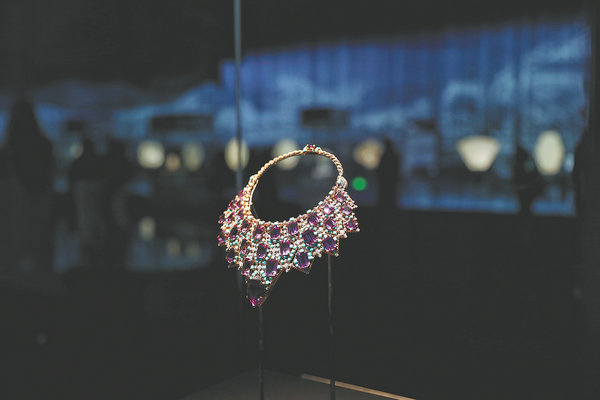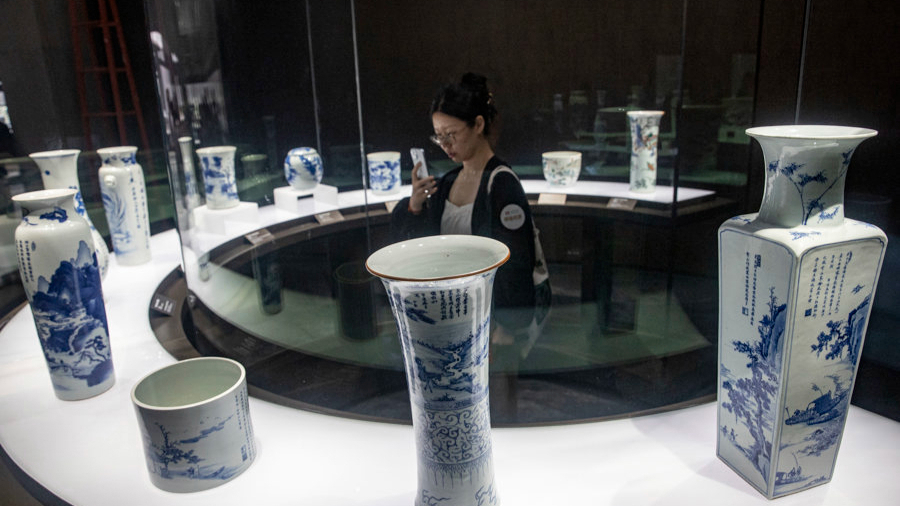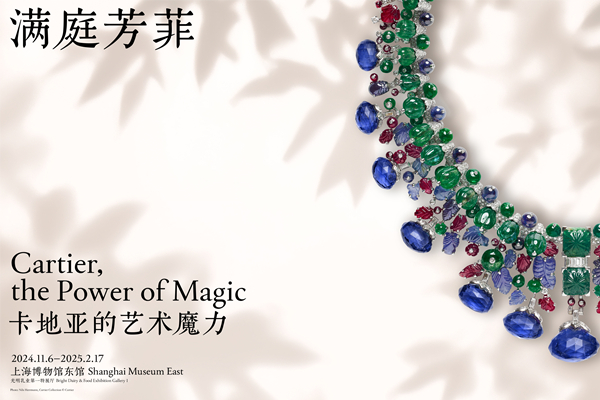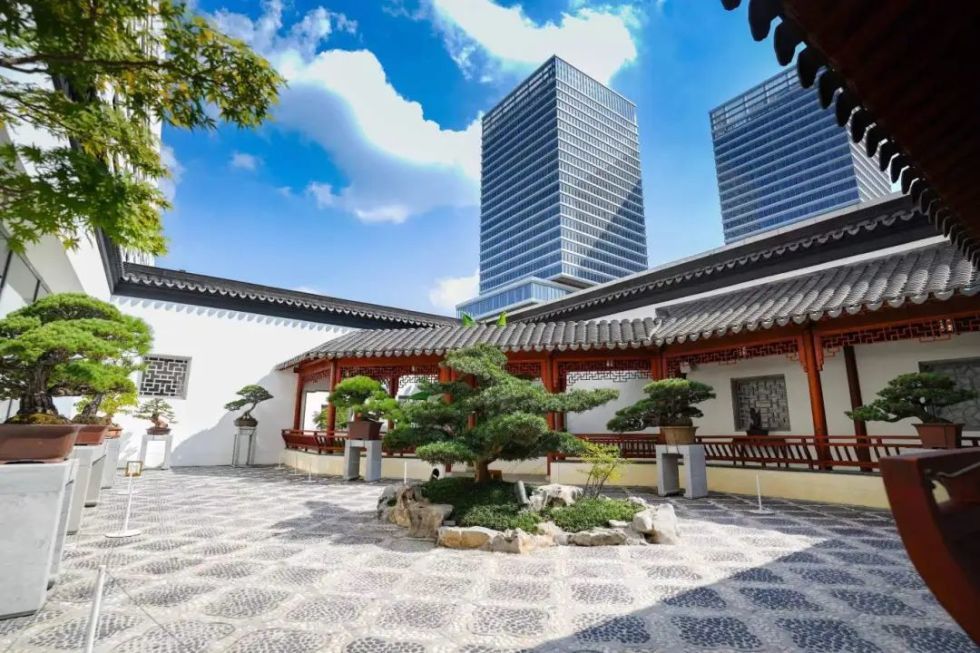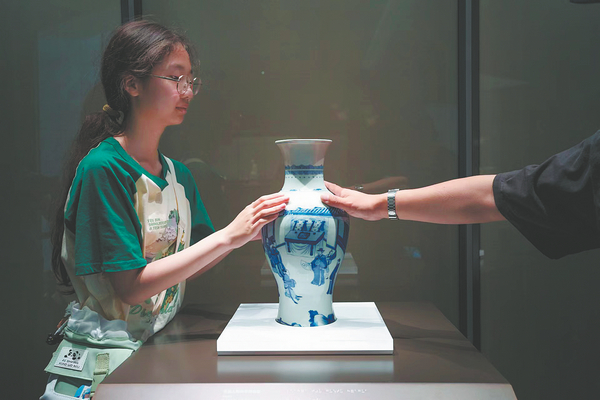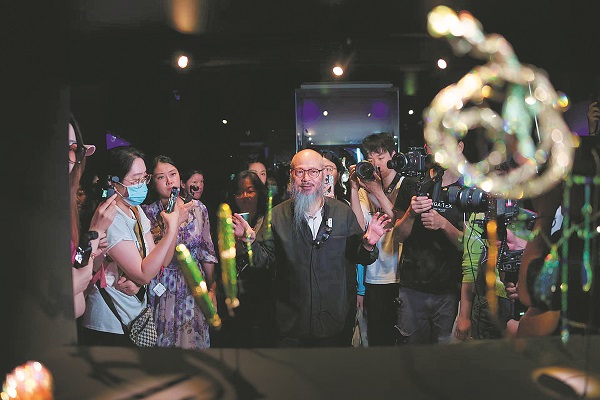Exhibition reveals treasures of ancient Buddhist pagoda
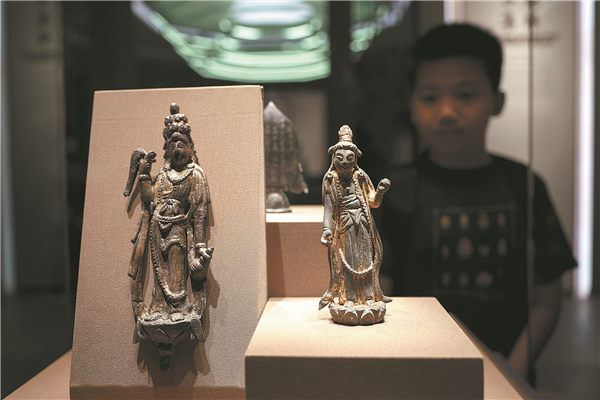
Among the skyscrapers and high-rise buildings, 13 ancient Buddhist pagodas still stand in various corners of Shanghai, quietly testifying to its long history and rich cultural heritage.
A Towering Treasure House: Relics of the Yuanying Pagoda in Shanghai, an ongoing exhibition at Shanghai Museum East, features a large collection of artifacts unearthed from Yuanying Pagoda in the suburban Songjiang district, the tallest and one of the most important.
Yuanying Pagoda, also known as Xilin Pagoda and Chong'en Pagoda, is a seven-level octagon tower built in 1388 made of wood and bricks that stands 47 meters tall.
Thirty years ago, the pagoda went through a major architectural restoration and archaeological exploration when more than 1,000 artifacts were unearthed from the treasure vase at its top and its heavenly palace one level below and underground palace.
These objects date from the 6th century to the late 1800s. The amount and diversity of the findings drew much attention to China's archaeological scene at the time.
The artifacts "reflected the historical position and unique charm of Jiangnan (south of the lower reaches of the Yangtze River) culture in terms of craftsmanship, philosophical insights and humanistic features, providing invaluable evidence of urban development, cultural vibrancy and the refined lifestyles of ancient Shanghai," according to Chen Jie, deputy director of Shanghai Museum.
Shanghai Museum selected more than 300 pieces to create the exhibition, divided into three sections. The first section recounts the restoration and archaeological exploration in the 1990s, with a lighting installation on the wall illustrating the structure of the pagoda. The inscription on a stone stele documents the history of the pagoda, from its construction to its relocation in 1444. It was after its relocation that the underground palace was opened, with Buddhist statues in gold and silver and Buddhist relics placed in and re-sealed until the 1990s.
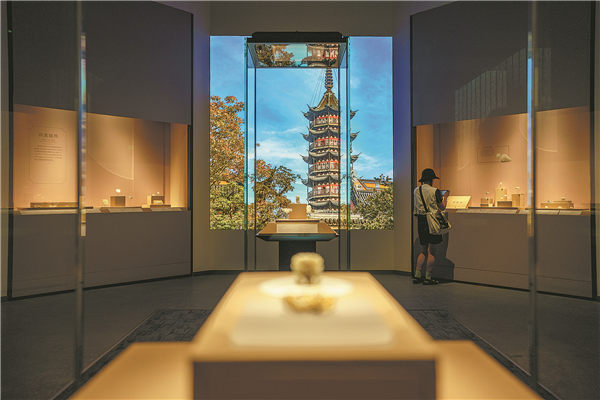
When archaeologists removed the treasure vase at the top of the pagoda during restoration, they found it decorated with not only typical Buddhist patterns but also auspicious images of traditional Chinese society, reflecting how Buddhism merged with folk beliefs, Chen says.
The second section features a selection of Buddhism-themed artifacts, including Buddhist statues made of different materials, miniature pagodas, vajra bells and more.
"Except for some ancient objects from the previous dynasties, most of these artifacts were made by local craftsmen," according to Rong Jingkan, curator of the exhibition. Sealed in the underground palace, they are "like objects in a time capsule" that reflect the social life, aesthetics and handicrafts of the time.
The wide range of materials, from gold and silver to crystal agate, amber and coral, were mostly treasured objects of high value and given as offerings to the Buddha when they prayed for good fortune, longevity and happiness, "the same thing everyone wishes for nowadays", Rong says.
Themed "A Huge World with Mundane Delights", the third section features utensils used in everyday life, from bronze mirrors, incense burners and stationery to hairpins and other jewelry. "People gave their favorite objects or things of special meaning to them as offerings to Buddha," Rong says. These objects provide a glimpse into the customs and lifestyles in the Yangtze River Delta region during that time.
"We want to present the long history of Shanghai with this exhibition and inspire people's love for the city to find resonance with its history," Chen says.
Since its trial opening on Feb 2, Shanghai Museum East has opened 80 percent of its exhibition space, Chen says. "We are now holding the grand exhibition of Egyptian civilization at our old venue at People's Square. There is also an exhibition featuring ancient Persian art.
"We tend to present exhibitions from other countries at Shanghai Museum on People's Square, focusing on ancient Chinese art and highlighting the local Jiangnan culture of the Yangtze River Delta at Shanghai Museum East," Chen tells China Daily.
If you go
A Towering Treasure House: Relics of the Yuanying Pagoda
Now through Nov 11, 10 am — 6 pm, Wednesday-Monday, closed on Tuesdays (except national holidays)
Reservation required.
Shanghai Museum East, Exhibition Gallery 2 (2F), No 1952 Century Avenue, Pudong New Area, Shanghai
